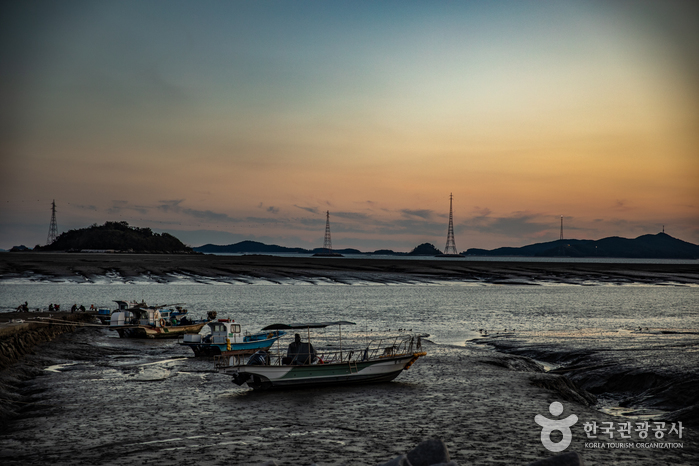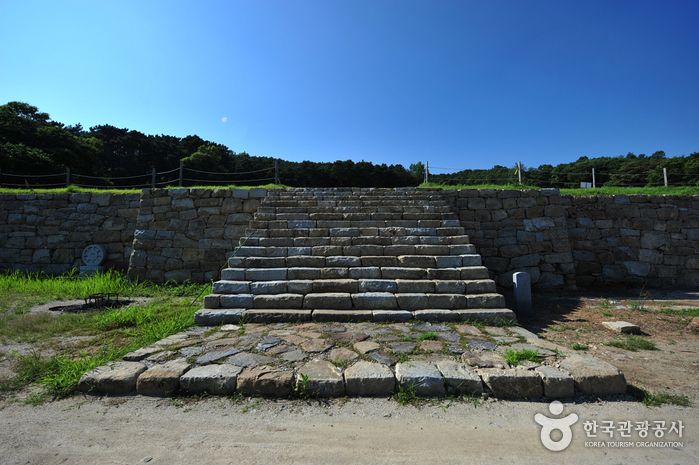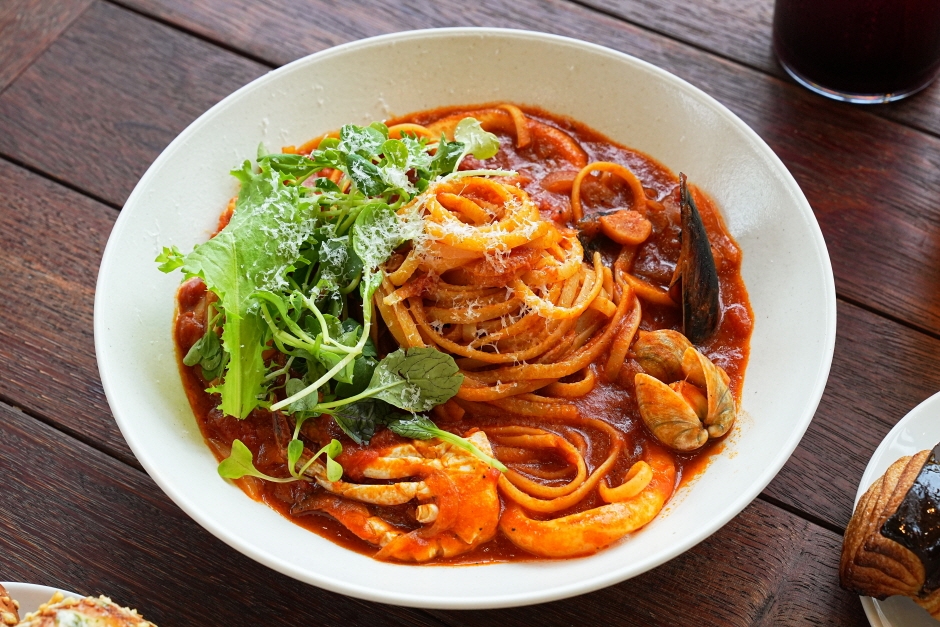Yeongjongdo Island (영종도)
12.8 Km 24934 2022-05-12
100, Unnamseo-ro, Jung-gu, Incheon
+82-32-745-0211
Yeongjongdo Island, combined with Yongyudo and Sammokdo Islands through land reclamation work, connects to the mainland via Yeongjongdaegyo Bridge and is located 3 kilometers northwest of Yeonan Pier, Incheon. The 4.42 kilometer-long ride to Yeongjongdo Island provides amazing views of the ocean and mud flats. A fish market is the first thing that greets visitors to the island, providing fresh seafood daily. The island has the Yonggungsa Temple and Baegunsan Mountain, known for its walking trails. At the peak of the mountain, visitors can see a panoramic view of Incheon International Airport.
Incheon International Airport Terminal 2
13.1 Km 7741 2022-12-26
446, Je2terminal-daero, Jung-gu, Incheon
+82-1577-2600
Since opening in 2001, Incheon International Airport has been rated as the best airport in the world numerous times. And to further improve, the Terminal 2 officially opened in 2018 after nine years of construction. Terminal 2 was desigend with the concept of an "artport," a portmanteau of art and airport, to serve as a space for entertainment in addition to an international tansportation hub.
With self-check in counters and smart counter that automatically checks in luggage for the convenience of passengers, the aiport implements high-tech services to better provide information and strengthen security. The airport has also upgraded their check-in system so that passengers can enjoy all the cultural space and attractions the airport has to offer
Seongmodo Island (석모도)
13.7 Km 19666 2021-05-28
9, Samsanbuk-ro, Ganghwa-gun, Incheon
+82-32-934-7500
Seongmodo Island, located 1.2 kilometers west of Ganghwado Island, is a popular destination for families and those looking for relaxation. The island has various mountains as well as a 41.8 kilometer coastal road.
Oepo-ri Kkotgejip (외포리꽃게집)
13.7 Km 21949 2024-03-20
1206 Jungang-ro, Naega-myeon, Ganghwa-gun, Incheon
Oepo-ri Kkotgejip is a restaurant dedicated to traditional blue crab delicacies, including kkotge tang (spicy blue crab stew), kkotge jjim (steamed blue crab), and ganjang gejang (soy sauce marinated crab). Positioned near Oepo-ri Quay, en route to Seongmodo Island, the restaurant provides a delectable experience of blue crab dishes complemented by a stunning sea view. Visitors can also take pleasure in the scenic Korean coastal landscape, explore the salted seafood market, and observe the fishing boats in the vicinity.
Gyeongin Ara Waterway (경인 아라뱃길)
13.9 Km 14478 2023-11-10
41 Jeongseojin 1-ro, Seo-gu, Incheon
+82-1899-3650
Ara Waterway flows 18 kilometers from the Hangang River to the West Sea. Opened in 2012, the waterway serves to quickly remove excess water from the surrounding areas to prevent flooding. The waterway also serves as a key route for transporting cargo via ship, as well as a natural green space.
The idea of Ara Waterway started nearly 800 years ago during the Joseon dynasty by King Gojong. Unfortunately, his plan could not be completed at that time due to technical obstacles and the difficult state of the country. After countless efforts and preparation, the construction of the waterway began in 2009 and opened in 2012.
Ganghwa Seonwonsa Temple Site (강화 선원사지)
14.3 Km 12516 2022-09-19
222, Seonwonsaji-ro, Ganghwa-gun, Incheon
+82-32-933-8234
Ganghwa Seonwonsa Temple Site was first discovered in 1976 during a surface examination around Ganghwado Island undertaken by the Ganghwado Island Academic Research Team of Dongguk University. The site was designated as Historic Site No. 259 in 1977. Seonwonsa Temple was built by General Choi Wu in 1245 (the 32nd year of King Gojong’s reign during the Goryeo dynasty), which was right after the transfer of the capital to Ganghwado during resistance against the Mongolian invasion.
The temple was meant to be a spiritual mainstay in fighting against Mongolia. It used to be one of the two largest temples in Korea along with Songgwangsa Temple. However, the temple was completely destroyed during the early Joseon era, leaving only the site itself. The famous wood blocks of Palman Daejanggyeong (the Tripitaka Koreana), currently housed in Haeinsa Temple at Hapcheon, are said to have been originally stored in Seonwonsa Temple. It is believed that the carved wood blocks were taken from Seonwonsa to Heungcheonsa Temple during the Joseon era and again moved to Haeinsa Temple during the reign of Sejo.
Located on a mountain slope, the presumed location of the building site extends 250 meters from south to north and 170 meters from east to west.
Olive Young - Yeongjong Sky City Branch [Tax Refund Shop] (올리브영 영종하늘도시점)
14.8 Km 0 2024-06-27
#103~#105, 20, Haneuljungang-ro 195beon-gil, Jung-gu, Incheon
-
Café de Chelsea (카페 드 첼시)
15.3 Km 0 2024-02-21
107-20 Gimpo-daero 2435beon-gil, Tongjin-eup, Gimpo-si, Gyeonggi-do
0507-1368-7780
Café de Chelsea is a brunch and bakery café inspired by the Chelsea Physic Garden, a secret garden in England. Its impressive indoor space and outdoor garden are captivating, featuring vibrant seasonal interior designs that change regularly, making it a popular spot for photography. They offer a range of beverages including espresso, milk tea latte, Chelsea spänner (Chelsea einspänner), and various bakery items. The tea room on the first floor offers specialty teas and a tea vin chaud.
Golden Grass [Korea Quality] / 옛날에금잔디 [한국관광 품질인증]
15.3 Km 5034 2020-12-10
18-1, Ganghwaseo-ro 225beon-gil, Ganghwa-gun, Incheon
+82-10-6212-6731
Golden Grass, located in Ganghwado, Incheon is an 80-year old hanok. Red clay wall, rafters, beams, and main floors exist in harmony. The wide lawn, pine trees, and various flowers in the yard add to the beauty of the hanok. Traditional furnaces, cauldrons, and a well create the friendly mood of a rural cottage. There are two rooms, Anchae and Sarangchae, where up to eight and four persons may use, respectively. The entire space can be rented for events like traditional wedding, outdoor wedding, and 1st birthday. Audio system, large tent, and barbeque facilities are available. Traditional Korean kitchenware such as cauldron, millstone, and rice-cake mullet are available for children to enjoy and experience different activities. Up to two pets can be accompanied free of charge and 10,000 won is charged per additional pet. Grill and charcoal are provided at 10,000 won for four guests, and cauldron with firewood is available at 10,000 won.
Gimpo Munsusanseong Fortress (김포 문수산성)
15.3 Km 8216 2022-12-20
Ponae-ri, Gimpo-si, Gyeonggi-do
+82-31-980-2485
Munsusanseong Fortress was built on Munsusan Mountain in 1694, during the 20th year of the reign of King Sukjong, the 19th king of the Joseon dynasty. The fortress as designed to defend Gwanghwado Island from marine invasion. At the time, the fortress had north, west, and south gates, but they were destroyed in a fire during the Byeong-in Yangyo (1866). The north gate was restoryed in 1995 and the south gate in 2002. The fortress walls span 6 kilometers in length, 4 kilometers of which remain unrestored. Surrounded by beautiful scenery, the top of the fortress commands a spectacular view spanning from North Korea to the Hangang River inlet, and from Samgaksan Mountain to the sea off Incheon in the distance. It is often referred to as the Geumgangsan Mountain of Gimpo as it boasts superb scenery throughout all four seasons. The mountain is home to Munsusa Temple, established during the reign of Silla King Jinseong.




![Golden Grass [Korea Quality] / 옛날에금잔디 [한국관광 품질인증]](http://tong.visitkorea.or.kr/cms/resource/23/2451823_image2_1.jpg)
 English
English
 한국어
한국어 日本語
日本語 中文(简体)
中文(简体) Deutsch
Deutsch Français
Français Español
Español Русский
Русский